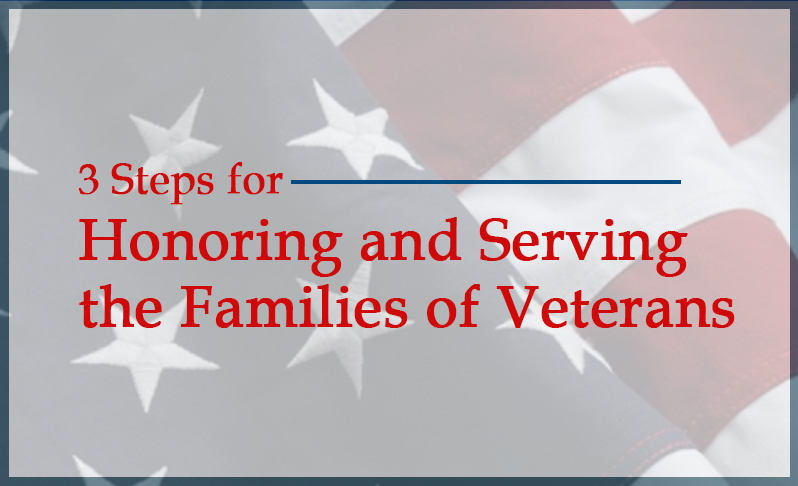In surveying the literature on war and its aftermath, including the literature on PTSD, there is virtually nothing about the families of veterans. The families of our veterans are the scapegoats of war. Their story is timeless, but I believe the time has come to tell it. A RAND Corporation study that was initiated by the National Military Families Association reports that military families experience more emotional distress and anxiety than families in the general population. Further, 95% of these families feel that others (outside the military) are unaware of their dilemmas. They are correct. The needs of the families of our veterans are, for the most part, ignored. In particular, their children are not given the support they need to offset the toxic conditions of war that are brought home.
Children Carry the Heavy Burden
The distress in the homes of veterans creates an epigenetic burden that is carried most heavily by children. Investigations into the mechanisms of the intergenerational transmission of trauma reveal that the children of veterans who have seen combat and who have returned from war with PTSD are more prone to violence; are at a higher risk for behavioral, academic and interpersonal problems; have difficulty maintaining friendships; are more likely to have sensory challenges or to be diagnosed with autism; are at higher risk for depression and have difficulty concentrating. Knowing all this, what do we provide to take this burden off the shoulders of children and families? Close to nothing.
Three Steps for Help
Three simple, initial steps can begin to shed light on this shadow.
- Education. Informing family members about how war comes home is the critical first step. Parents deserve to understand how they and their children are likely to be negatively impacted by a returning veteran’s PTSD, whether or not it is diagnosed. It is entirely possible to describe the physiological, emotional and developmental consequences that unfold in language that parents can understand.
- Resources. This means providing parents with practical tools that they can use for themselves and their children to prevent an escalation and accumulation of the conditions that create traumatic intergenerational transmission. We are fortunate to be living in a time when our enhanced understanding of the neural mechanisms of trauma and its repetition give us the capacity to provide such tools and the support needed to sustain their use.
- Family-Centered Transition. The final step involves a larger, more complex vision. This phase suggests that we have the responsibility to develop a structure in which both education and resources are regularly provided to the children and families of our veterans, alongside their transition services. Knowing as much as we do about the likelihood of intergenerational traumatic transmission from war and its consequences in society, it is our responsibility to create appropriate transition services.
They Were Families: How War Comes Home, is a soon-to-be-published book devoted to these three steps. When I discuss these steps with civilians they frequently respond, in all innocence, by saying: “Don’t we already have this?” These three steps are so common-sense, so obviously needed, that the assumption by people who have not investigated this issue is that it has already been taken care of by the powers that be. Surely “they” know this. But there is no “they.” No government or foundation agencies provide this support to our veterans’ families. We must be the “they” that voices this obvious need and advocates for its fulfillment. It is a tall order, but it must be done.
To become more aware and involved, please sign up for the free Healthful Life Strategies newsletter to receive more information in the future. Additional education and resources for veterans and their family members will be provided in future blogs.
The Author
 Stephanie Mines, Ph.D, is the founder and Program Director of the TARA Approach for the Resolution of Shock and Trauma. She is a founding Board member of Veterans Families United. Along with VFU’s Executive Director, Cynde Collins-Clark, she has created a transition facility design (REST House) for veterans and their family members. Their design is included in Dr. Mines’ forthcoming book They Were Families: How War Comes Home (New Forums Press, 2016). Dr. Mines can be contacted at [email protected].
Stephanie Mines, Ph.D, is the founder and Program Director of the TARA Approach for the Resolution of Shock and Trauma. She is a founding Board member of Veterans Families United. Along with VFU’s Executive Director, Cynde Collins-Clark, she has created a transition facility design (REST House) for veterans and their family members. Their design is included in Dr. Mines’ forthcoming book They Were Families: How War Comes Home (New Forums Press, 2016). Dr. Mines can be contacted at [email protected].



